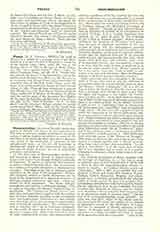

Phasga (A. V. PISGAH).—Whether the word in Hebrew is a proper or a common noun is not clear; certain it is at any rate that it designates a mountain of the Abarim range (Deut., xxxii, 49), east of the Jordan (Deut., iv, 49), in the land of Moab (Num., xxi, 20), “over against Jericho” (Deut., xxxiv, 1), above Yeshimon [Num., xxi, 20; D. V. “which looketh towards the desert” (‘Ain Suweimeh)], east of the north end of the Dead Sea (Deut., iv, 49; Jos., xii, 3), in connection with Mount Nebo, and commanding an extensive view of the Holy Land (Deut., xxxii, 49; xxxiv, 1-4), on the southeast border of which it stood (Deut., iv, 49). From all these indications it appears that Phasga is no other than Mount Nebo itself (Jebel Neba, southwest of Hesban or Hesebon), or, better still, the western peak of the mountain, Ras Siagha. On its slopes the Israelites pitched their camp (Num., xxi, 20); in the “field of Sophim” (D. V. “a high place”) on the mountain Balaam uttered his second oracle about Israel (Num., xxiii, 11-24); lastly from the top of Phasga, Moses surveyed the Promised Land.
CHARLES L. SOUVAY

